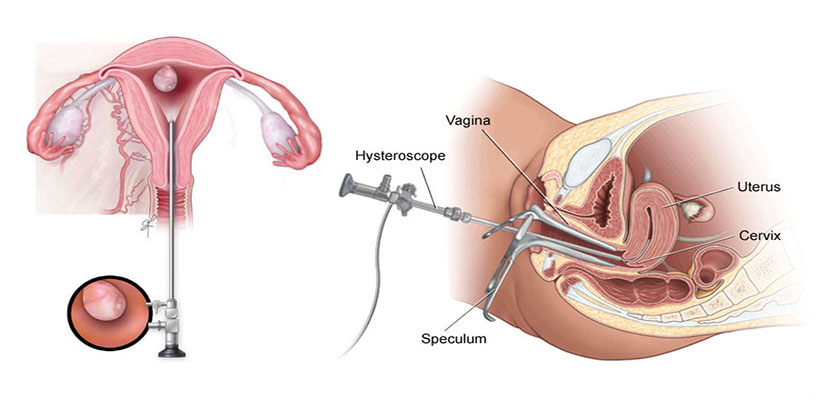


What is a Hysteroscopy?
An operation to curette, or sample the lining of the womb. A hysteroscopy is an examination of the inside of the womb using a very fine telescope, or hysteroscope, introduced through the neck of the womb.
Why is a Hysteroscopy performed?
This operation is performed for two reasons. The first is to try to make a diagnosis, usually to explain why the womb is bleeding in an abnormal way. The second is to treat something that is wrong. A hysteroscopy is usually done at the same time as a D&C. It allows the doctor to see the inside of the womb. A hysteroscopy can be done in the clinic or in the operating theatre under an anaesthetic. DIAGNOSIS When a woman has a normal period, she loses blood and the tissue cells lining the womb (endometrium). In the first half of the monthly cycle, the ovaries make a hormone called oestrogen. This makes the endometrium grow thicker. After ovulation, the ovaries make a second hormone, progesterone. If the egg which is released from the ovary each month is not fertilized, the endometrium is shed, together with blood. The whole cycle then starts all over again. If a woman bleeds too often, too much or too little, she may have a hormone problem or an abnormality inside the womb itself.
What Happens During a Hysteroscopy?
The operation is done through the vagina and there will be no scar. When a D&C is done the cervix, or neck of the womb, is stretched up, or dilated. The cervix will be dilated enough to allow the surgeon to pass a hysteroscope and a small curette (scraping instrument) into the womb. The curettings obtained will be collected and sent to the laboratory. A general anaesthetic is preferred, as stretching the cervix is painful. A local anaesthetic can be used. It is not always necessary to dilate the cervix to do a hysteroscopy when this is done in the clinic. The operation only lasts about 5 minutes. Possible Complications during a Hysteroscopy
This is a very safe operation, but every operation and anaesthetic carries a small risk. Unexpected problems and reactions can arise with anaesthetics. Hysteroscopy done as an outpatient avoids the risks of general anaesthetic but a small number of women will find this uncomfortable or feel faint during the examination. A D & C is such a short operation that major complications are very rare indeed. It is possible to push the dilator through the wall of the womb into the abdominal cavity. This sounds very alarming but all that is usually done is to extend the hospital stay another day or two. An infection of the womb and tubes can follow a D & C. All these complications are also very rare indeed.
